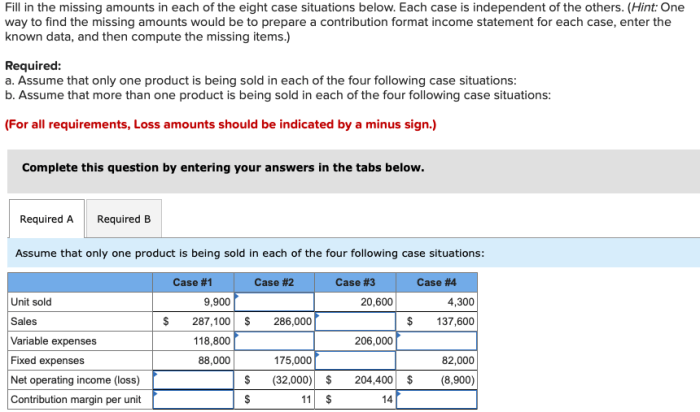In the realm of financial analysis, the identification and determination of missing amounts play a pivotal role in ensuring the accuracy and reliability of financial statements. For each case below find the missing amount, we delve into the methods, implications, and best practices surrounding missing amount analysis, empowering you with the knowledge to navigate these complexities effectively.
Understanding the characteristics of cases involving missing amounts, employing appropriate calculation methods, and analyzing their impact on financial statements are crucial steps in this process. By mastering these techniques, you gain the ability to make informed decisions, mitigate risks, and enhance the credibility of your financial reporting.
Identify Cases: For Each Case Below Find The Missing Amount

Missing amounts arise when financial statements lack complete data due to various reasons. Identifying these cases is crucial for accurate financial analysis and decision-making.
Common cases of missing amounts include:
- Incomplete records due to lost or damaged documents.
- Unrecorded transactions or events.
- Estimates used in the absence of precise data.
- Incomplete disclosure of financial information.
FAQ Explained
What are the most common methods used to calculate missing amounts?
The most common methods include ratio analysis, trend analysis, and regression analysis.
How can missing amounts impact decision-making?
Missing amounts can lead to incorrect financial statements, which can in turn lead to poor decision-making.
What are the best practices for reporting missing amounts?
Best practices include disclosing the missing amounts in the financial statements and providing an explanation for why they are missing.

